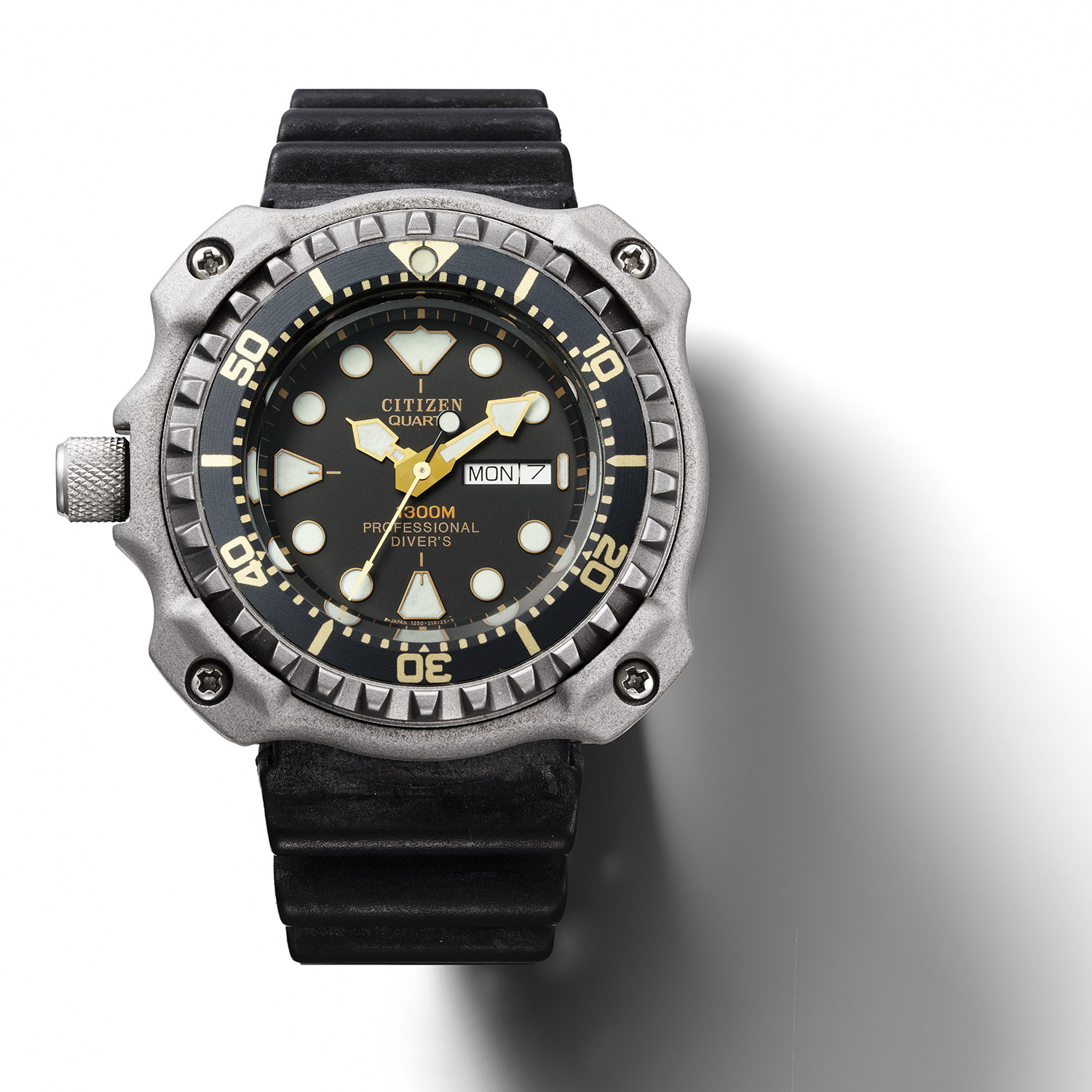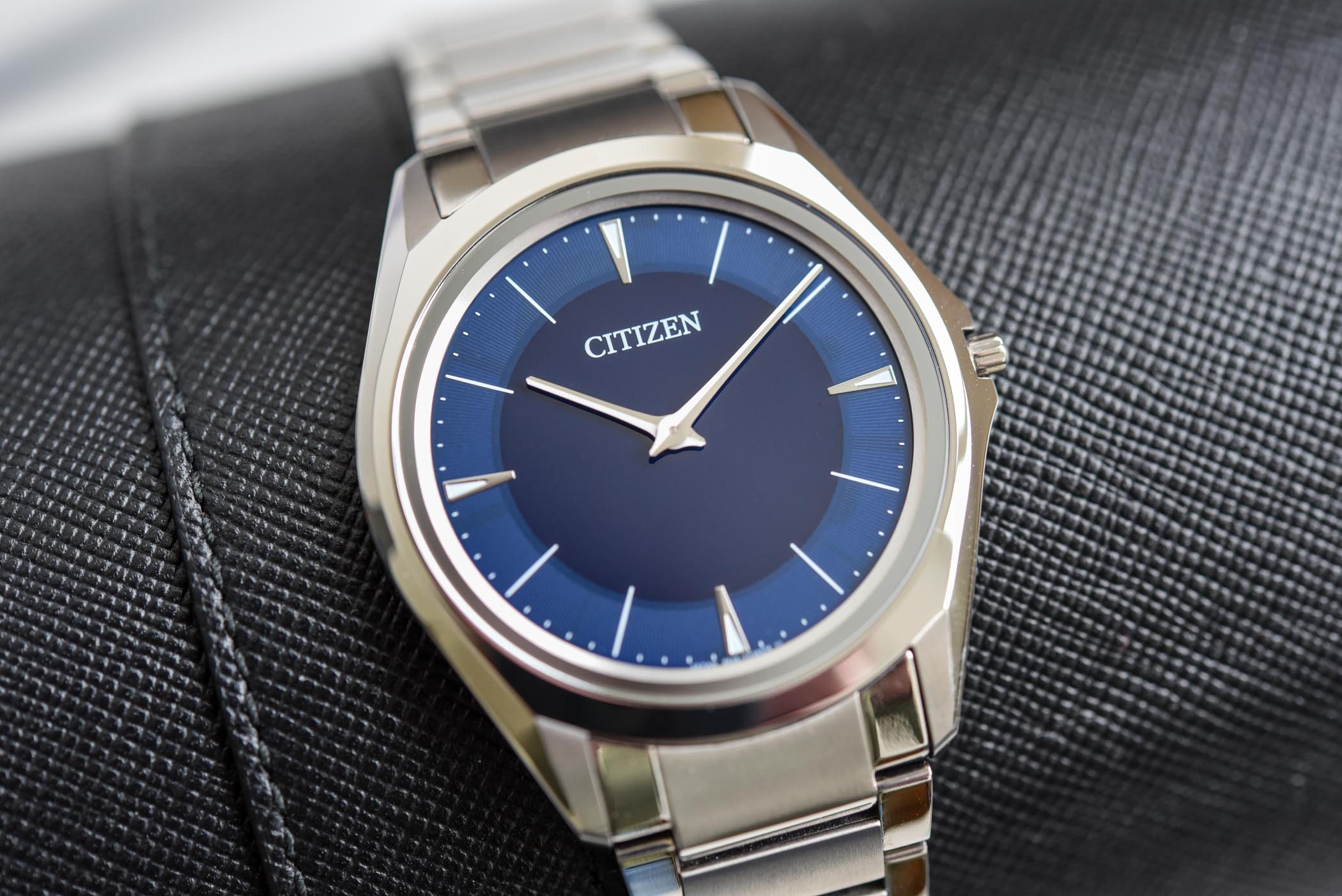1970, Citizen Launched the First Titanium Watch and now Celebrates 50 Years of Titanium Technology
Believe it or not, the first titanium watch was a Citizen and it was in 1970.

For many, titanium is the ideal material for a watch. Named after the Titans of Greek mythology, titanium and titanium alloys offer unique properties. Titanium is lightweight, has high tensile strength, but its surface gets scratched easily. It offers excellent corrosion resistance, it is non-magnetic, non-toxic, biocompatible and hypoallergenic… And its first commercial use in a watch dates back to 1970, in Japan. This year, Citizen Watch celebrates 50 years of titanium technology.
With its exceptional properties, titanium has numerous applications, from space and aeronautical industries or medical equipment production to architectural engineering or watchmaking. However, the cost and the complexity to process this metal limit its use. This also explains why titanium, an abundant element, is a relatively recent material. Although it was discovered in the late 18th century, it was not commonly used until the 1940s… And the genesis of the first titanium watch was anything but straightforward.

Back in the 1960s, besides the use of precious metals, many watch cases were made from plated brass (the extensive use of stainless steel came in the 1970s). These were prone to corrosion since the plating would peel off over time. This is when Citizen embarked on a research project to find improved materials to craft watches. With its new research centre opened in 1964, Citizen’s engineers turned their attention to titanium that was recognized as rust-resistant, strong, hypoallergenic and light.
However, working with titanium is a challenge. It tends to stick to the mould when it is pressed, it wears down tools when it is machined and traditional polishing techniques do not obtain a perfectly even surface. In short, titanium is hard to press, hard to machine and hard to polish. Despite these difficulties, Citizen was able to present the X-8 Chronometer in 1970, the world’s first titanium watch. But this was by no means the end of the road: in fact, it was just the beginning. Over the years, the brand continued to experiment with titanium, pioneering new techniques to process the metal. The single-minded pursuit of mastering all the challenges in relation to processing and crafting parts in titanium gave the brand an upper hand in this field.

Besides processing, another challenge for Citizen was to improve the rough, matte aspect of titanium. In 1987, with the launch of the Attesa collection, Citizen released titanium watches with a soft lustrous finish. The brand’s efforts in this direction led to the invention of Duratect. As titanium gets scratched easily, the idea was to protect its aspect with a proprietary surface-hardening technology. Duratect results in scratch-resistant, high-polished surfaces in a vast array of colours. Duratect was introduced to the market with the ASPEC World Time in 2000.

Super Titanium™
The culmination of Citizen’s efforts to master titanium has been the creation of Super Titanium™, a registered trademark for a material that combines the brand’s titanium-processing technologies and the Duratect surface-hardening process.
To get a better idea of the production process, you can watch the following video about the Eco-Drive One Super TitaniumTM, the thinnest light-powered watch, at only 2.98mm.
Citizen’s Super Titanium™ is lightweight (about 60% lighter than steel) and is super comfortable on the wrist, gentle on the skin and hypoallergenic. It is scratch-resistant with a surface hardness about five times superior to that of stainless steel. It is rust-resistant and can be produced in a variety of colours – unlike untreated titanium.
EXPANDING INTO Ultra-precise watches… and into SPACE
Lightweight structures and advanced materials with superior strength to weight ratio have long been identified as critical allies for the space industry. Today, with this unique expertise, Citizen is partnering with the Japanese start-up Hakuto-R to provide Super Titanium™ technology for their lunar exploration programme. Hakuto-R aims to successfully explore the surface of the Moon by 2023.
For this bold adventure, ispace (a lunar exploration company) is independently developing a lunar lander and a lunar rover to explore the surface of the moon. CITIZEN’s Super Titanium™ will be used in both vehicles. The use of Citizen’s proprietary Super Titanium™ is expanding beyond the world of watchmaking… to make it to the Moon. But Citizen’s latest use of this high-tech version of titanium was shown at Baselworld 2019, with the impressive Calibre 0100 – it had to be done in Super Titanium™, of course.

For more information, please visit www.citizenwatch-global.com/titaniumtechnology50th.









4 responses
I have often thought of buying a titanium watch but been put off with the thought of your new expensive watch quickly looks tatty, good for thought.
Titanium serves me every day ,i cant complain its still looking very new and good.
With all the new polishing techniques, titanium is so much better these days than say 25 years ago. Nowadays it can be finished like steel and it’s more scratch-resistant!
I have the Octo Finissimo in titanium, and it is wearing very well. No scratches at all (yet). It seems more scratch resistant than 18kt gold.